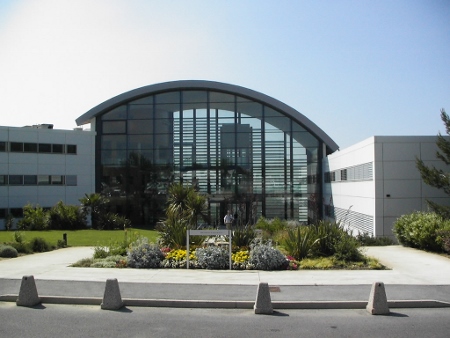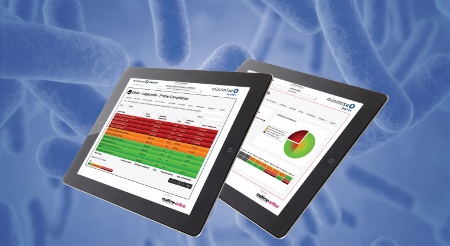This article looks at the threat of Legionella in hospitals, medical centres, and care homes and the technologies available to control the spread of this potentially-deadly infection
Hospitals and care facilities are often large buildings with complex water systems through which bacteria can easily spread.

This year at the 2016 Infection Prevention and Containment Conference: Understanding and effectively managing water systems, with specific reference to Legionella and Pseudomonas. Find out more
In addition to this, patients and elderly residents are more likely to fall into one of the groups that make them more susceptible to disease, including having an underlying medical condition or weakened immune system.
Facilities and estates managers should avoid water temperatures and conditions that favour Legionella growth, ensure water cannot stagnate anywhere in the system, remove any redundant pipework that may exist in the network, and stop using any materials that encourage the development of Legionella
In recent years, Legionella has made it back into the news, with several reported outbreaks in hospitals across the UK. As recently as June this year, Brighton and Sussex University Hospitals NHS Foundation Trust was fined £50,000 for failing to control the growth of Legionella in its water systems.
The case followed the death of vulnerable cancer patient, Joan Rayment, 78, at the Royal Sussex Hospital on 9 November 2011, eight days after a urine sample tested positive for the Legionella bacteria antigen.
With the spotlight firmly back on the need for bug-free water systems, manufacturers are bringing to market a range of solutions.
Speaking to BBH, Gabrielle Fletcher, assistant product manager at Wavin, a supplier of plastic piping systems for drainage and water systems, said facilities managers need to ensure they firstly monitor systems so they know when problems occur. Then they need to take precautions to limit the growth of bacteria, and have a protocol in place for treatment should a problem be detected.
The best defence
He said: “Good offence is the best defence when it comes to water systems. Options that should be considered include thermal disinfection – maintaining constant high temperatures as well as shock disinfection; chemical disinfection – the presence of an additive like chlorine; good system design to avoid stagnation of water; regular maintenance to remove any sediment from the system; and the use of materials that inhibit the formation of biofilm for the bacteria to feed off.
Particularly in environments where Legionella has not been detected, there is the very-real option to switch to a chemical, or part-chemical, approach
“If a system is designed and ran properly, troublespots should be kept to a minimum.”
Guidance on the subject can be found in the latest versions of the Health and Safety Executive’s ACOP L8 and its appended HSG 274 parts 1, 2 and 3, among others.
Des Dolan of Durapipe UK said: “Legionnaires disease is caused by a bacterium that exists in water and remains inert at temperatures below 25°C. It proliferates in water circuits at temperatures fluctuating between 25°C and 45°C, meaning hot and cold water systems, air conditioning circuits, and cooling towers are most at risk.
“Facilities and estates managers should avoid water temperatures and conditions that favour Legionella growth, ensure water cannot stagnate anywhere in the system, remove any redundant pipework that may exist in the network, and stop using any materials that encourage the development of Legionella.”
Minimise Water has recently launched its new Compliance Online system, which has been developed to monitor water system temperature.
It uses a combination of technologically-advanced hardware and software to collect temperature data, reporting it back in real time to an easily-accessed, cloud based dashboard. This means those responsible for water monitoring and compliance reporting can review multiple sites from their desktop.
The most-effective methods include flushing through systems, thermal shock, and chlorine shock
The system can be used across multiple sites and can even be used nationally or internationally, providing a central point for all relevant and critical records, such as certificates of calibration and remedial works.
Effectively it is an electronic log book; a full, paperless audit trail.
To further protect water systems from bacteria development, regular flushing and treatment is vital/ <.>
“The most-effective methods include flushing through systems, thermal shock, and chlorine shock,” said Dolan.

Nimes Hospital is one of a number to have selected a pipework system designed to help combat the growth of legionella bacteria
Save your energy
Brian Booth of Chem-Aqua added that, while temperature control is vital, cash-strapped hospitals can look to combine this with a chemical approach to get the best outcome at a lower cost, and with less impact on their carbon footprint.
He said: “We have an agenda within the healthcare sector to save energy and keep costs to a minimum. If you think how many water cylinders are stored above 60 degrees, it’s using a million kW of energy, so logic tells you it’s not always the best defence.
“Particularly in environments where Legionella has not been detected, there is the very-real option to switch to a chemical, or part-chemical, approach.
We have an agenda within the healthcare sector to save energy and keep costs to a minimum. If you think how many water cylinders are stored above 60 degrees, it’s using a million kW of energy, so logic tells you it’s not always the best defence
“As part of a two-pronged attack, hospitals could realistically lower the temperature of their water supply – say to about 45 degrees – and use a chemical and save both financially and in terms of carbon emissions.
“When you do the maths it starts to make much more sense. Lowering the temperature to 45 degrees on 1,000 litres of water could save £1,000. Using basic calcium hypochlorite to further treat the system could save £157.
“These are dangerous chemicals, so you still have to have reliable equipment and people to test it and check it, but with various options available – salts, liquids, tablets, granules and gels – it is becoming a very-real option for the healthcare sector.”

Minimise Water’s new Compliance Online system monitors water system temperature
